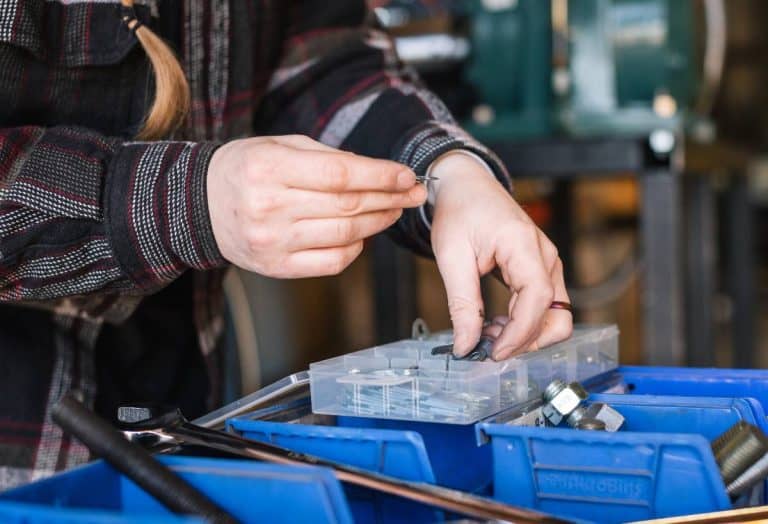The Truth About Riding Your Ebike While Charging
Electric bikes, or e-bikes, are becoming more popular as people look for alternatives to driving and riding traditional bikes. Ebikes are a great option for commuting because they’re easy to ride and you can cover a lot of ground quickly. But, can I ride my ebike while charging? Here’s what you need to know.
In general, pedaling does not contribute to the charging process for most electric bikes. They necessarily involve their lithium-ion rechargeable batteries to be plugged into an electrical outlet to get a charge.
Key Takeaways
- Pedaling does not contribute to the charging process for most electric bikes. They necessarily involve their lithium-ion rechargeable batteries to be plugged into an electrical outlet to get a charge.
- You should never charge your bike in a place where the outlet is exposed to water or moisture.
- One of the most important things you can do to keep your electric bike battery in good condition is to charge it regularly.

Can You Charge an E-Bike While Riding?
If you’re lucky enough to have a bike with regenerative braking, then the answer is yes! Regenerative braking means that your bike captures the energy from pedaling and uses it to charge the battery while you ride. This is an extremely efficient way to charge your e-bike, and it’s great for long rides where you might not have access to a charger.
However, it’s important to note that regenerative braking is only available on some models of e-bikes. If your bike doesn’t have this feature, then you’ll need to charge it using a traditional method such as plugging it into an outlet. Either way, make sure you’re prepared for your ride so that you can enjoy the experience without worrying about running out of power
Regenerative braking on E-Bike
Have you ever wondered how your electric bike recharges its battery while you ride? The answer is regenerative braking! Regenerative braking is a way to recharge the battery on an electric bike. It uses the kinetic energy of the bike and converts it into electrical energy for recharging. Regenerative braking is especially useful for hills because it helps to preserve battery power.
Range regenerative braking adds
When it comes to electric bikes, one of the most important factors to consider is range. After all, no one wants to be stranded miles from home with a dead battery. Fortunately, there are several ways to increase the range of an electric bike. One of the most effective is regenerative braking. Regenerative braking systems capture the kinetic energy that is normally lost when braking and convert it into electrical energy. This can add up to 70% more range to an electric bike, depending on how often the brakes are used.
What are the disadvantages of regenerative braking?
While regenerative braking does have some advantages, there are also a few disadvantages to consider. One of the biggest drawbacks is that the system is noticeably less efficient at slow speeds. This can be a major issue for commuters during rush hour when traffic is slow-moving and stop-and-go. In these conditions, the battery cannot capture and store much power, and the driver will see a significant reduction in the benefits of regenerative braking.
Is regenerative braking bad for the battery?
When a vehicle uses regenerative braking to recover energy, this results in periodic high current rates during recharge. While this can be beneficial in terms of improving range and efficiency, it also has the potential to damage the Li-ion traction battery. High current rates can generate heat, which can degrade the battery cells and reduce their battery capacity over time
Can you charge a bike by pedaling?
A method of charging your electric bike while you ride is called regenerative braking, which is available on some models. Instead of losing all of the power you just generated by pedaling when you hit the brakes, regenerative braking stores it and puts it to use later. Although some of the energy lost during braking can be managed to recover to recharge the battery pack, only about 5-10% of that energy is used.
Can You Solar Charge an E-Bike?
Option 1: DIY Solar Charger
Connecting solar panels with a combined power output of 100 to 200 watts to an inverter and then using that to power the bike charger is the most straightforward method. If it’s destined to start charging the bike at night, after which add a solar battery charger as well as a 50Ah lithium phosphate battery.
Option 2: Mount Solar Charger to Ebike
You could also look for a solar charger that’s designed to be mounted on an e-bike. These usually come with a mounting kit, and the solar panel can either be placed on the handlebars or frame.
How Far Can You Go on an E-Bike Without Regenerative Braking or Solar Power?
There are bikes here that can travel 80 miles or more on a single charge. The battery’s capacity, the terrain, the wind, and your weight are all factors that reduce range.
How to Go Further on a Single Charge
Pedaling harder will ultimately result in a higher speed, and more energy production. For the most part, the range of an e-bike is increased when pedal assistance is used as opposed to when the throttle is the only source of propulsion.
What Type of Electric Bike to Get to Maximize the Range
When you say “long-range electric bike,” you’re referring to an e-bike that can travel far on a single charge. The batteries on these e-bikes typically have a capacity of 500Wh or more, and they’re typically outfitted with efficient motors to make the most of that capacity.
Cost of E-Bike Batteries
Depending on its age, quality, size, compatibility with the bike’s brand, and other factors, the price of a battery for an electric bike can range from $200 to $500. If they have been used before or are in bad shape, you can find them for lower prices.
Battery Do’s and Don’ts
Here are some do’s and don’ts when it comes to e-bikes:
Charge Your Ebike Battery Regularly
One of the most important things you can do to keep your electric bike battery in good condition is to charge it regularly.
It’s important to charge your e-bike battery before you use it, and then again after every ride. This ensures that your battery remains at maximum capacity and won’t have to work too hard when you’re riding.
Avoid heated environments and stay cool whenever possible.
Your battery is best when it’s kept at a moderate temperature. If you live in an area where temperatures are very hot or very cold, you’ll need to take special precautions to make sure your battery stays at a good temperature for as long as possible.
Don’t leave a battery in a discharged state.
Never store your battery empty; it should always have 40-to-70 percent of its full capacity. You may need to store your electric bike battery for many different reasons such as taking a trip or because it’s too cold outside to ride, but regardless of the situation, you should never let the battery run completely dry.

Can I Ride My Ebike While Charging FAQs
Should you charge your eBike battery after every ride?
After a battery dies, it’s best to charge it as soon as possible. After each ride, plug your electric mountain bike or e-bike in to ensure it’s charged and ready for the next adventure. To prevent damage while charging, turn off the battery.
Can I leave my e-bike plugged in overnight?
Many people believe that it is not safe to leave an e-bike plugged in overnight, but this is not the case. A fully charged battery for an electric bike can stay on a charger all night without damaging the battery or causing any other problems. So if you’re ever in a situation where you need to charge your e-bike overnight, don’t hesitate to do so.
Can you charge a bike by pedaling?
Will an electric bike recharge as you ride? The answer is yes, but it’s not very efficient. Electric bikes have a low 10% return on input, meaning that for every 1 kilometer you pedal, you only get 10% of a kilometer’s worth of charge.
In other words, you’d have to pedal 10 kilometers to charge the battery enough to ride 1 kilometer. That’s not very practical! Our electric bikes connect directly to the wall to recharge, so you can just plug them in when you’re done riding for the day.
How many years does an e-bike battery last?
When it comes to e-bike batteries, one of the most common questions is: how long will it last? Unfortunately, there is no simple answer to this question. The lifespan of an e-bike battery can vary greatly depending on several factors, including how often it is used, how it is stored, and the quality of the battery.
The BMS, which stands for “battery management system,” regulates the cells that provide energy to your eBike. The only thing a casual cyclist needs to know about battery management systems (BMS) is that if their battery is performing poorly, it’s probably because of a faulty BMS.
With that said, if you take reasonable care of your battery, you can expect it to last anywhere from three to five years at the very most.
Do E-bikes charge going downhill?
Believe it or not, there are still a lot of people out there who are unsure of how e-bikes work. Do they charge going downhill? The answer is no, the vast majority of electric bicycles do not charge when the rider is coasting downhill or applying the brakes. There are a few that do, but this is extremely uncommon and more of a marketing ploy on their part.
Conclusion
Electric bike owners must keep this in mind when planning their commutes and factor in the time to charge their bikes. Without taking the proper precautions, electric bike owners may find themselves unexpectedly stranded without a working bicycle.
Although electric bikes are becoming more popular, there is still much that the general public does not know about them – including how they work. Make sure you do your research before committing to purchase an electric bike so that you understand everything that is involved in owning one.






